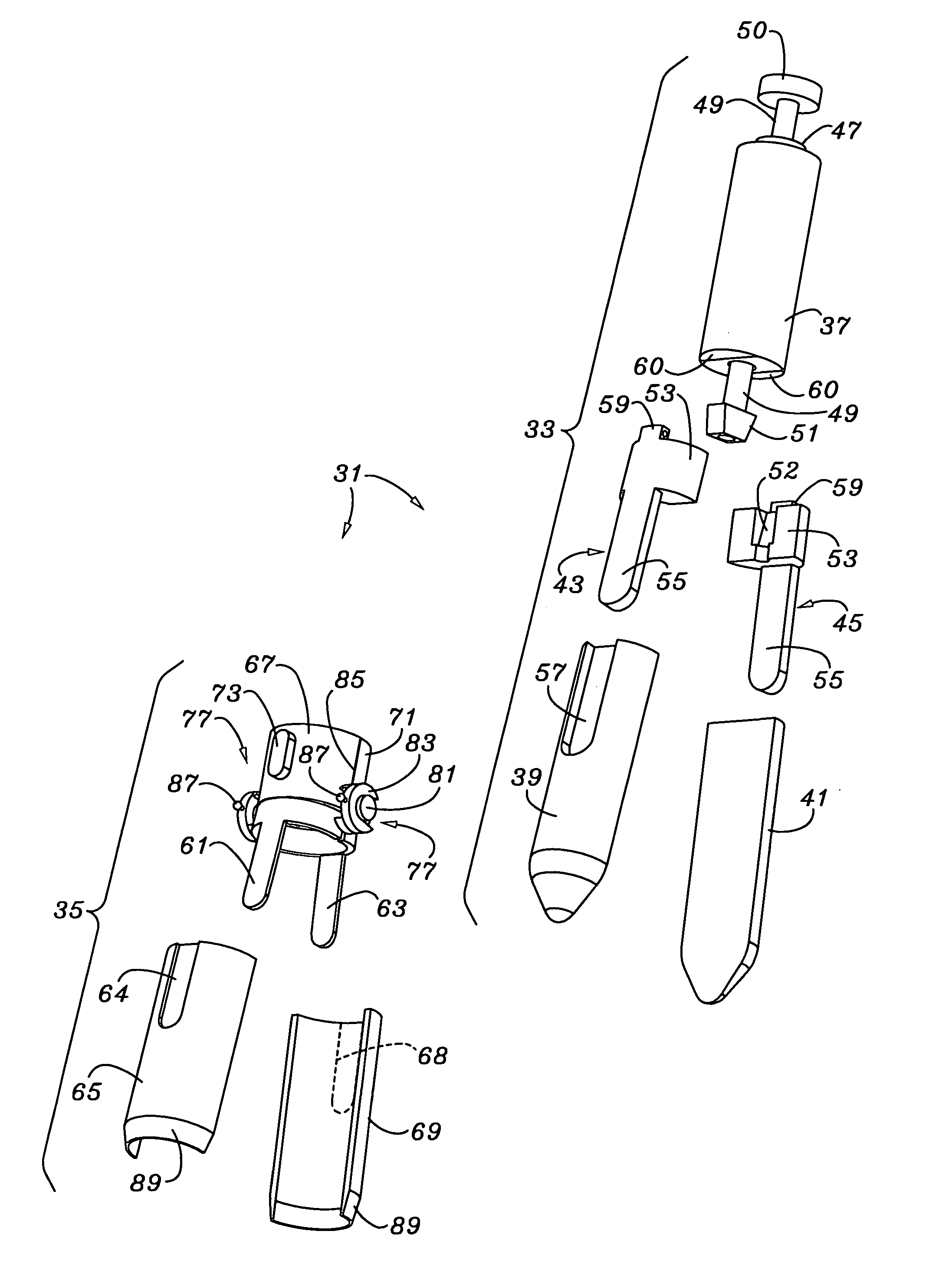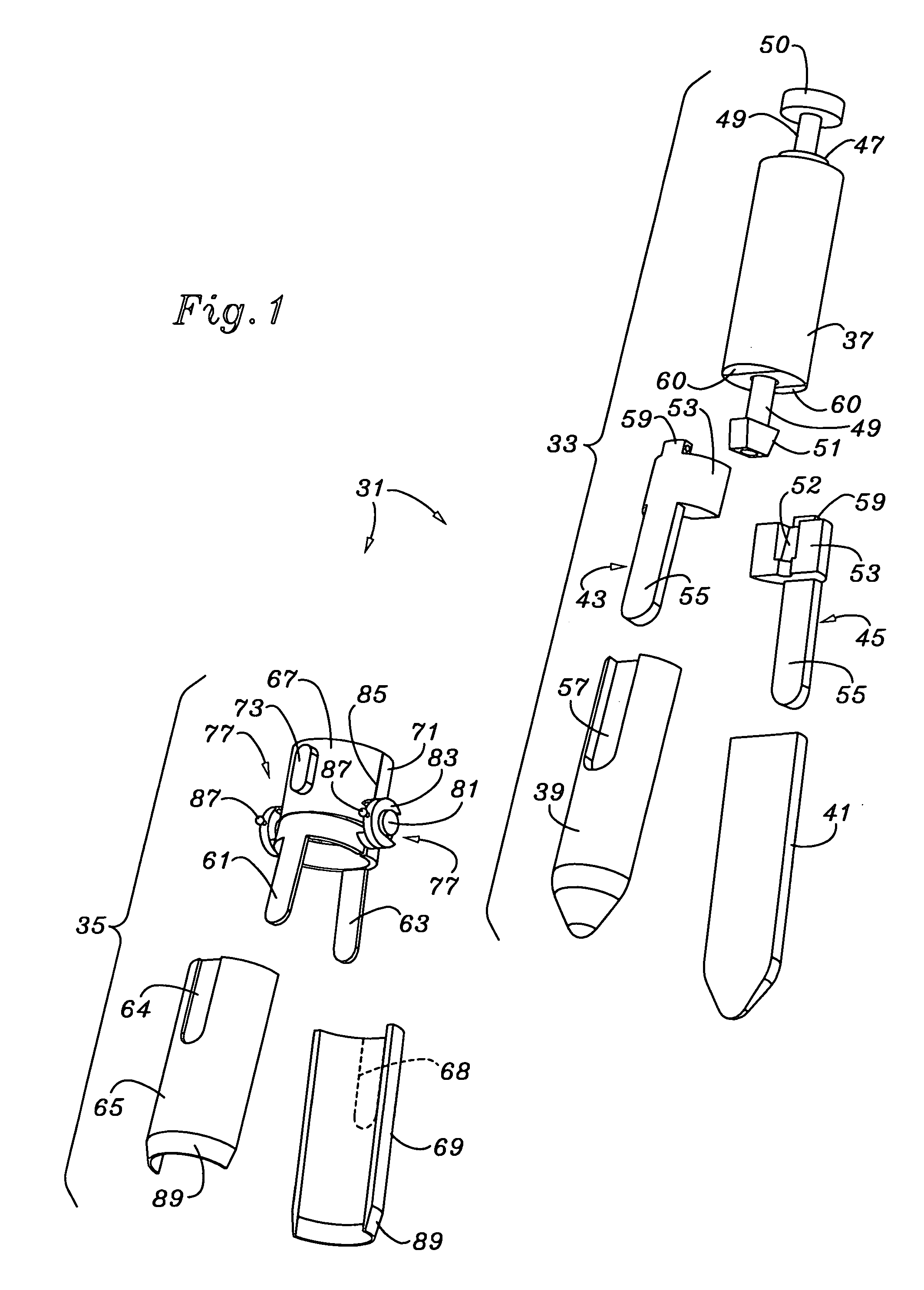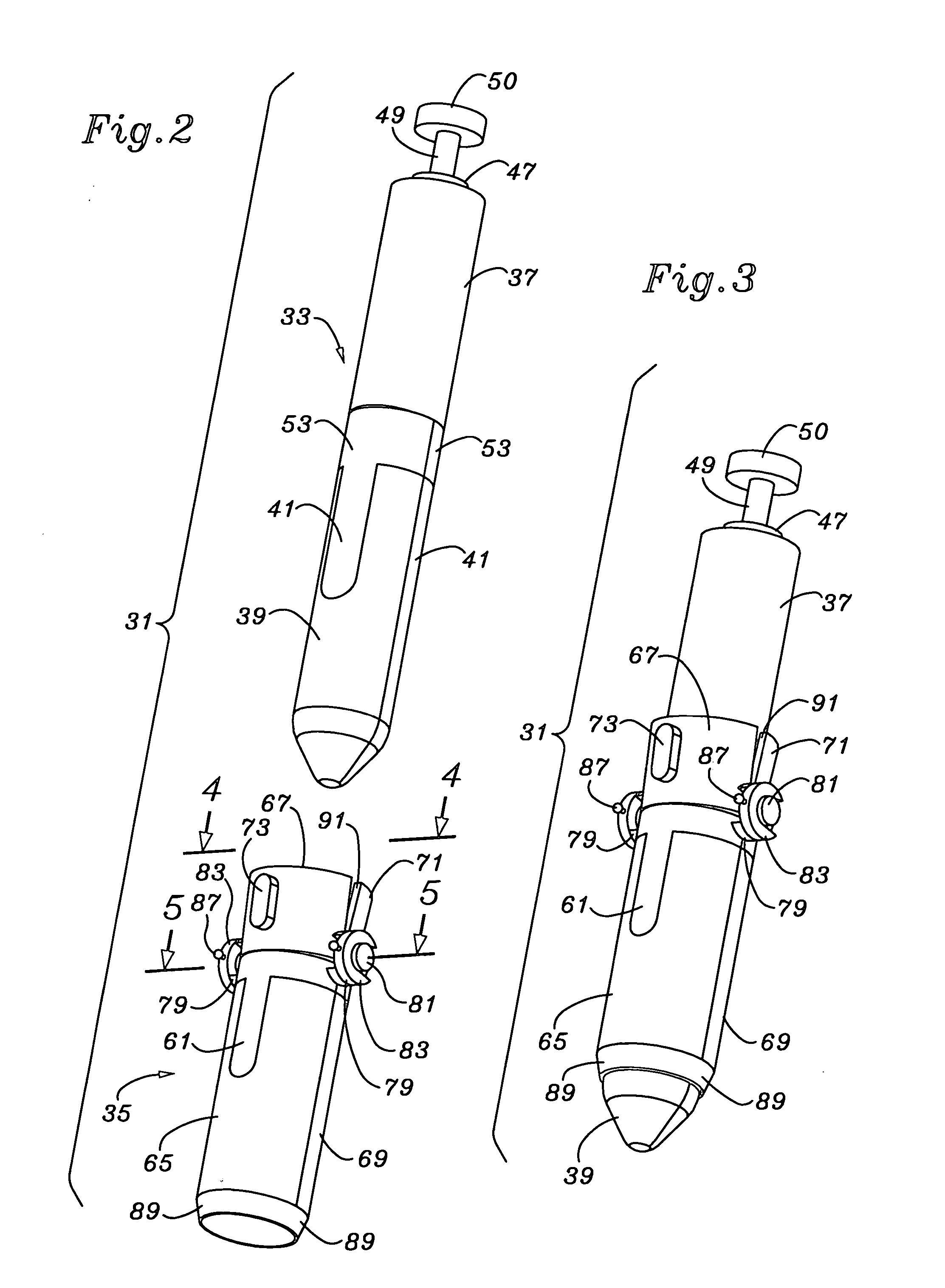Williams and McCullough however were often difficult to maintain in optimum position and relied on the interspinous and supraspinatus ligaments for a counter
fixation point severely stretching these structures.
Taylor retractors were also used but were cumbersome, required larger incisions and often injured the
facet joints.
However, there were several disadvantages to the MED and METRX systems.
It also compromised the “angle of approach” necessary for safe usage of the operating instruments.
This problem was proportionately aggravated with the long length of the tube.
This compromised
visualization contributed to the following problems, including
nerve injury, dural tear, missed disc fragments, inadequate decompression of the
lateral recess, increased epidural bleeding, difficulty controlling epidural bleeding, inadequate
visualization of the neuroforamen, and inadequate decompression of neuroforamen.
The repetitive introduction of successively larger dilators caused
skin abrasion with the potential for carrying superficial
skin organisms down to the deeper tissue
layers hypothetically increasing the
risk of infection.
The
learning curve for operating in a two dimension endoscopic field proved to be arduous and contributed to the above complications.
The attempted use of the METRx
system for more complex procedures such as fusion was further hazardous by inherent limitations.
However, the enlarged foot piece was unwieldy and difficult to seat properly.
Exposure of the angle of approach was also limited by having to operate through a proximal
cylindrical tube with its limitations as described before.
Keeping debris off of the endoscopic lens has also proved to be a troubling challenge.
Currently available surgical
retractor systems fail to fulfill all of the above requirements.
Consequently there is a severe need for structures and procedures to meet such requirement.
This method of introduction into the body while acceptable for use with an enclosed tube encounters problems when the newer systems with retractor blades which can be opened apart are utilized.
This necessarily results in tearing and shredding of the
muscle as the blades are forced apart.
Since the muscles have retained their strong attachment to the bone, forcing of the retractor blades apart necessarily requires ripping and shredding of the muscles and associated blood vessels and nerves.
The retraction blades of the Quadrant system are also cantilevered a considerable distance from their attachment point on the
ratchet bar creating unwanted movement, stress, and loss of
muscle retraction compromising
exposure.
Applying a force from such a distance tends to (1) lose control of
soft tissue retraction and therefore compromises the “working channel”, (2) loads stress into bending and compression moments of a mechanical apparatus, and (3) having the mechanical apparatus block the surgical area while it is being employed.
Therefore, the Quadrant system's retractor blades location at a considerable distance from its base attachment point on its
ratchet bar creates a long lever arm moment which lends
instability to the retractor blades.
The Pipeline retractor, while adequate for one level posterior lateral fusion procedure, has the deficiencies as described in the Quadrant
System because of the serial dilation introduction method and suffers from negative effects of its extreme complexity.
Raymond attempts to address the need to accommodate for lower
lumbar lordosis by using a curved ratchet frame, but their fixed curvature cannot adjust to different lordotic angles.
In addition, the Pipeline retractor has proven extremely difficult to spread the retractor blades up an inclined slope along the arc of the ratchet arms against the strong resistance of the
muscle and
fascia even using a separate spreader device.
The Pipeline device also has proven to be so complex that it is very difficult and
time consuming to set up, operate, and learn to use.
The deficiencies of a three bladed retractor like Nuvasive's become apparent when used for other procedures such as a posterolateral
lumbar fusion.
If the Nuvasive retractor is deployed such that the middle blade is lateral, then
visualization of the
spinal canal can be difficult.
Another reference, Cocchia's U.S. Pat. No. 6,224,545 has a number of shortcomings, including (1) a surgical frame having no structure to allow flexion and extension, (2) retractor blades which are rotated with an awkward force plate device, and (3) the knobs used to control movement of the device are difficult to use due to the proximity on the patient's skin and inability to apply adequate torque.
Coccia's use of a force
plate method to provoke angulation of the
retractor blade, also lacks the control to return to neutral from outward deflection.
As a result, Coccia's device is impractical for advanced retraction needs.
The hinges did not serve the purpose of
contouring the device to the surface of the body.
Furthermore, the retractor hinges were “free moving” and did not have control devices.
These concepts have not been able to be employed in higher level retractor systems.
 Login to View More
Login to View More  Login to View More
Login to View More 


